- You are here:
- Home »
- Carroll
Tag Archives for " Carroll "
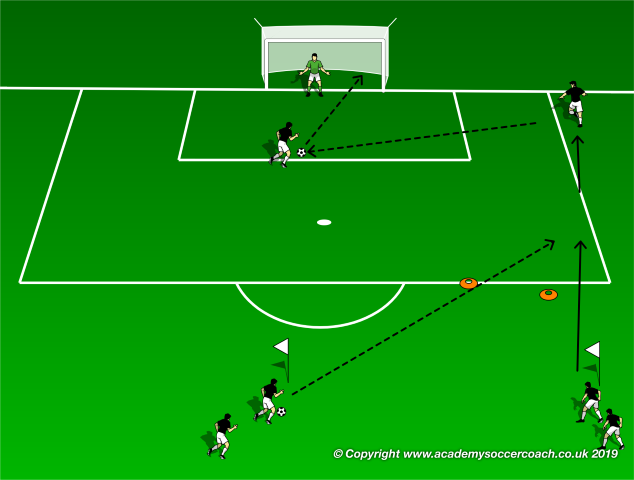
The Most Effective Pass in the Game
By Matthew Carroll –
Description:
The purpose of the Raptor Bomb drill is to recreate the most effective key pass in the game, the pass directed from the edge of the box and backwards into the 18 with high repetition and pace.
Setup:
Set up a gate angled to cut over the corner of the 18, players should start 20ft beyond the 18 with a cone in the middle for one line, and a cone 20 ft away and lined up with the outside of the gate
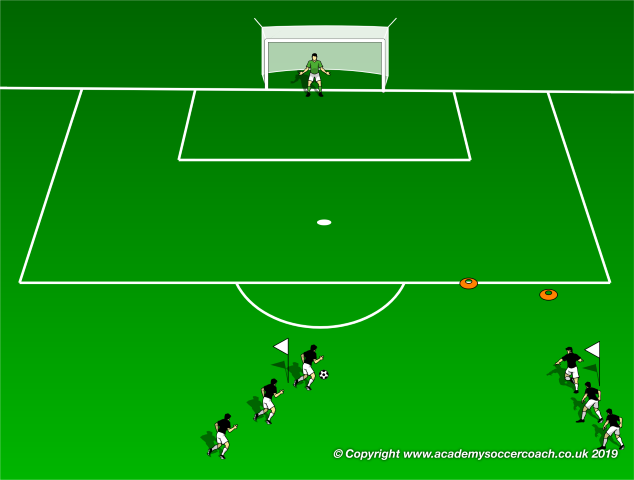
Execution:
Passing line plays it through the gate so that runner is forced to run outside of the gate and receive ball coming towards goal.
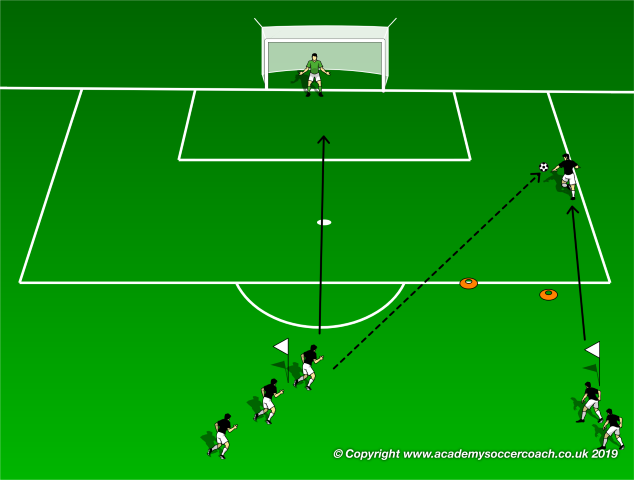
They then cross the ball to the runner who should be behind them. The runner then must one time the ball. After contact is made for the shot the next player passes the ball and the cycle begins again with pace. After a set amount of time players should have scored a set number of goals as directed by the coach.

Variations:
Multiple runners can be used from both sides alternating . Goals and conditions may vary based on ability of players.
By Matthew Carroll

Small-Sided Color Recognition Game
By Matthew Carroll –
Description:
The Color Recognition Game is a good way to get players to start reacting to visual cues, players will be in various angles and therefore will be forced to turn their heads to view the pinny thrown in the air, this naturally teaches players to check their shoulders
Setup:
Create a grid, size determined by number of players. In each corner of the grid place a different colored pinny. Create an age/skill level appropriate obstacle course within the grid. A coach, with a pinny that matches each pinny in the corners, stands in the middle. Players spread themselves out amongst the grid, each with a ball.
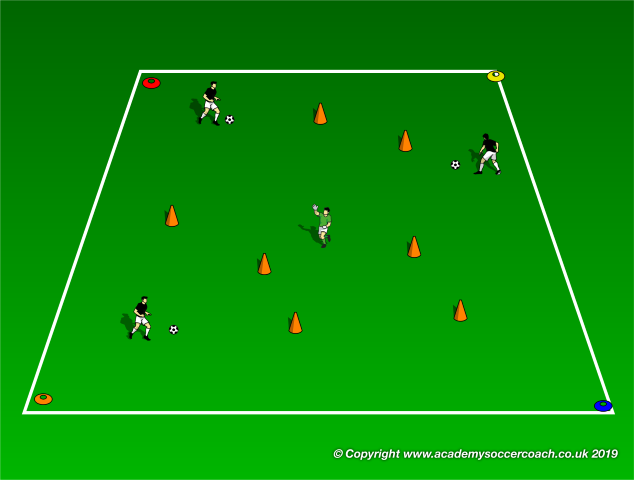
Execution:
Players dribble in the grid with out without a series of obstacles set up by the coach. The coach stands in the middle with the colored pinny and whenever they blow the whistle they throw a pinny in the air. Players must recognize the color of the pinny and then proceed to dribble to the corner with the same colored pinny. Once they stop the ball under their foot on the corner they return to dribbling in the grid and wait for the next whistle
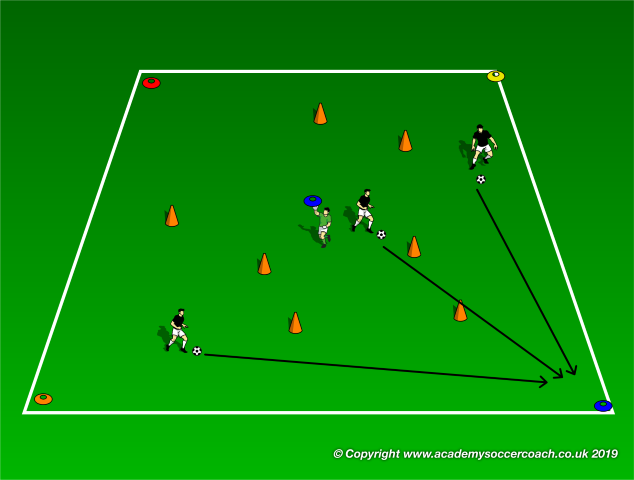
Variations:
The numbers of colors, grids, and players can vary. Defenders can be added to up the difficulty.
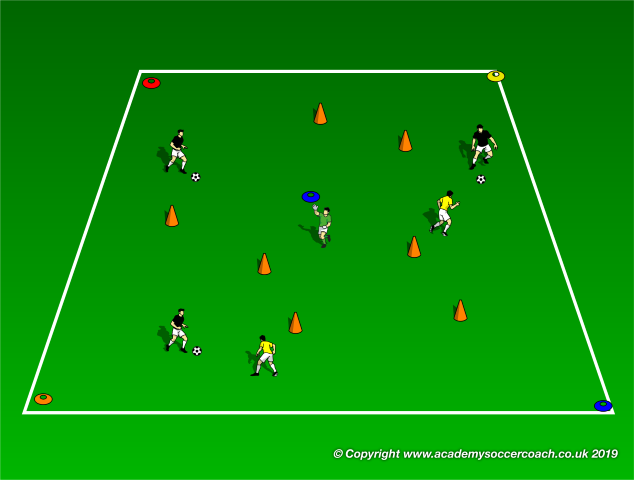
By Matthew Carroll
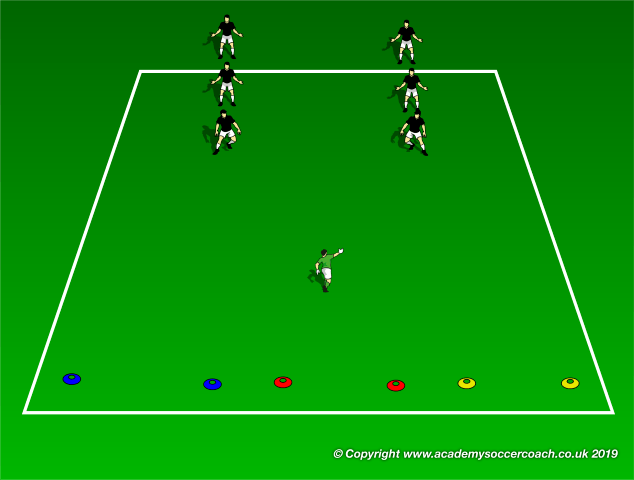
Visual Cues Small-Sided Game
By Matthew Carroll –
Description:
The color game is especially useful for younger players to help them get used to recognizing visual cue that correspond with a physical movement. Even the fastest dribbler on the team will struggle with the game if they cannot adjust to the games visual cues so it can also help those players that rely purely on their speed to add another element to their game.

Setup:
Three grids are created representing red, yellow, and green. Players are put into two line roughly 10 yards from the grids. The player that is “up” in either line has a ball. A coach stands between the grids and players with the placards: a yellow one that says green, a red one that says yellow, and a green one that says red.
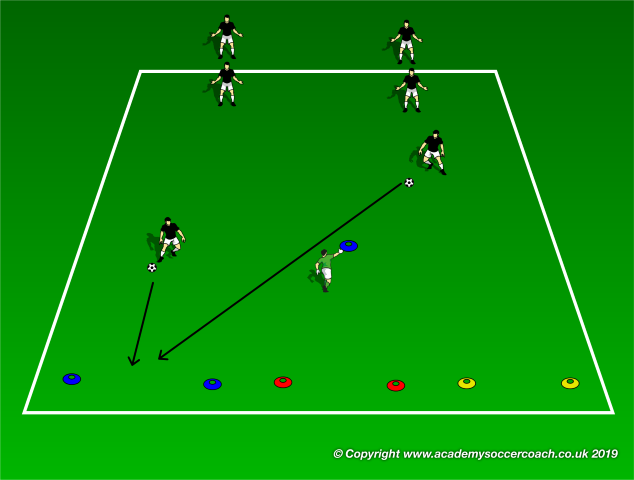
Execution:
The two players that are up start with their balls, the coach holds up one of the placards, the players then identify which grid they need to go to based on what the card says, not the color of the card. The players then race to that grid, who ever makes it there first is the winner and gets to go again, the loser goes to the back of their line.
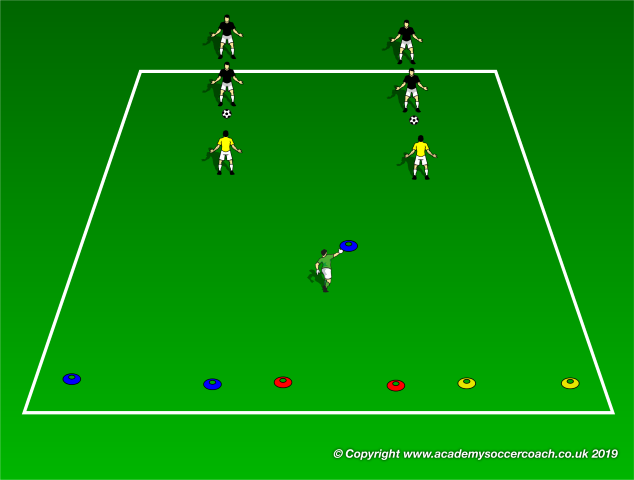
Variations:
The numbers of placards, grids, and players can vary. The players that just went then could become defenders, this would add an element of the importance of the first move to beat a defender to get to space.
By Matthew Carroll
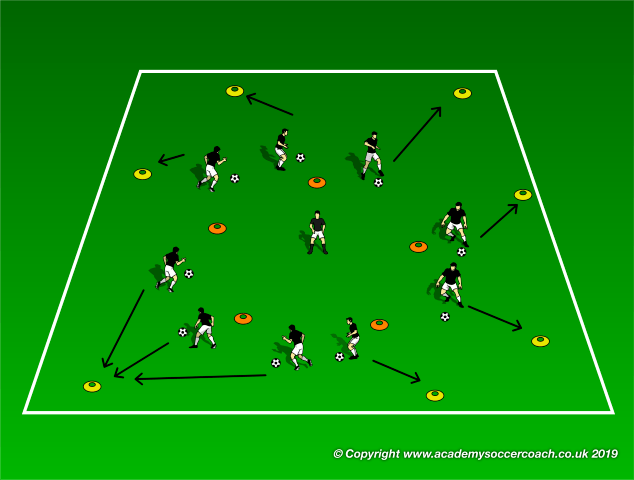
Musical Cones
By Matthew Carroll –
Description:
The Musical Cones Activity is a variation of the children’s game musical chairs. It is a fun warm up activity that will get players focusing on their control on the dribble, as well as their balance and ability to stop the ball. Recommended for younger age groups but can be adapted to older groups as well.
Setup:
The coach is placed in the middle with players dribbling in a circle around him. There is a ring of cones around him. There should be at least one less cone than the number of players. Width of circle and distribution of the cones should be dependent on the size of the group and ability of the players.
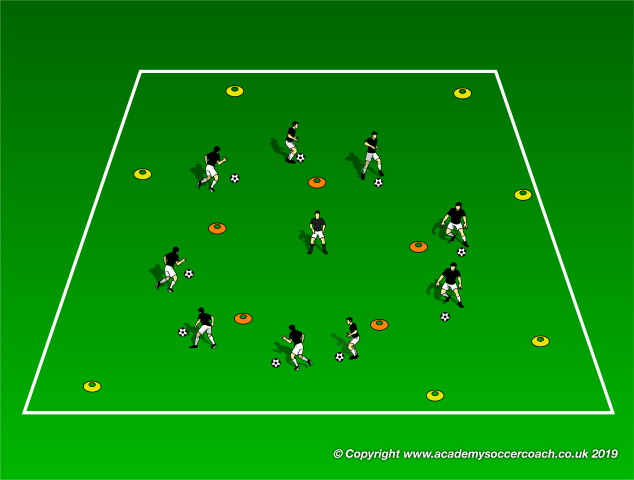
Execution:
The coach plays music/claps/makes noise while the players dribble around him. When the noise stops players must dribble quickly to a one of the cones and stop the ball on one foot, with the other foot on the cone.

The loser needs to do a dance, and then the game resets.
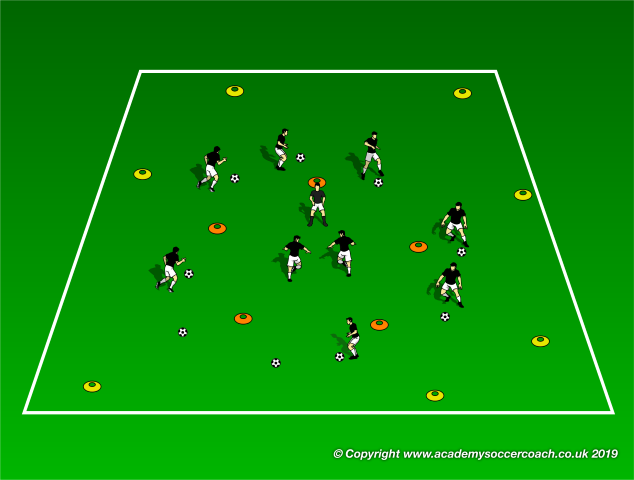
Variations:
The cones can be spread out or in a circle. Players can dribble freely or be in a circle around the coach . The player that loses in each game can be eliminated and given a specific task such as juggling with another coach or for older groups some type of conditioning.
By Matthew Carroll
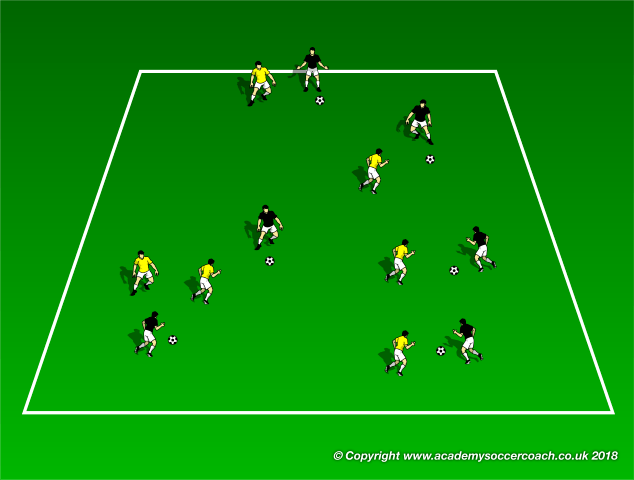
No Elimination Knockout
By Matthew Carroll –
Description: No Elimination Knockout is a game that creates systematized chaos in which the structure of the game is constantly changing from a individual game into a team orientated one. The defensive side works mainly on pressing and denying space to their opponents
Setup:A grid is created in which one team is on “offense”, each player has a ball. The other team is the defending team.

Execution: The defending team attempts to knock the opponent’s balls out of the grid. If a player’s ball is knocked out of the grid they then become an outlet player for their team, until ultimately it becomes a game of keep away with one ball.
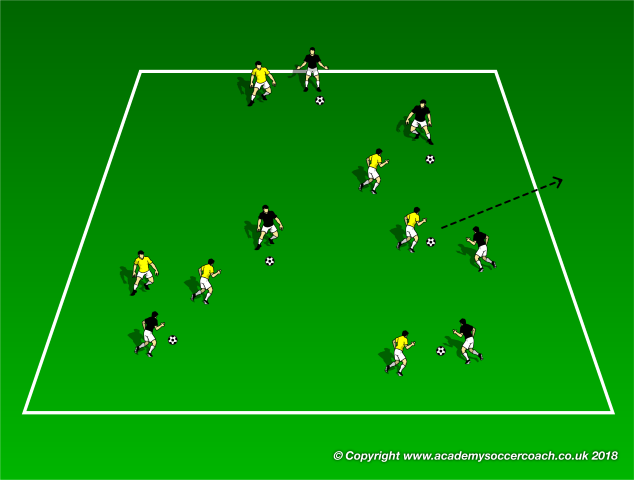
The session is timed. The team that can knock out all of the opponents balls in the fastest time wins.
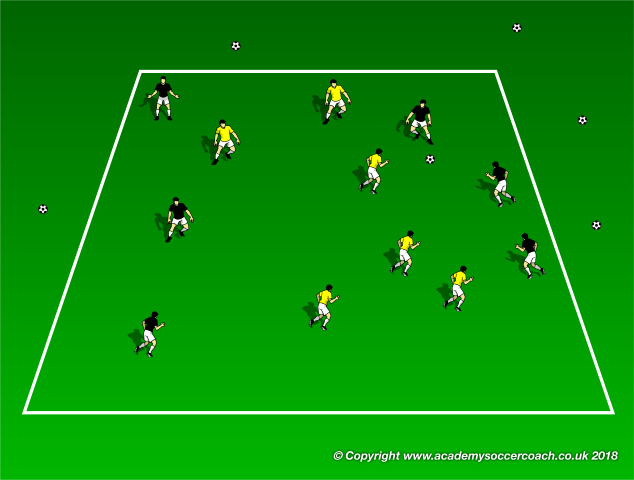
Variations: Grid size, number of players, how many balls are involved are all variables that can be altered.
By Matthew Carroll
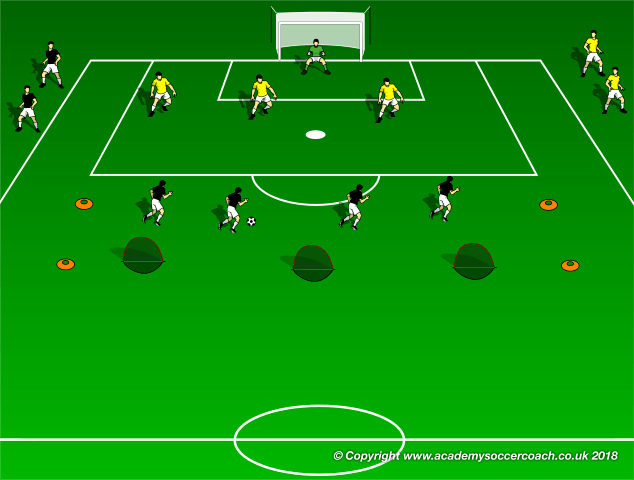
The Plus Minus Game
By Matthew Carroll –
Description: The plus minus game is a high intensity small sided game with built in rest periods for players. The purpose is to create a high level of intensity with a variety of numerical advantages and disadvantages.
Setup:A field is set up with the 18 then continues 30ft out. At the far end of the field three mini goals are set up. The defending team starts with 3 players and the attacking team with 4. On the side of the drill is a rondo with all of the reserve players.

Execution: The defending team attempts to score on one of the three goals, while the attacking team attempts to score on the net. If the attacking team scores an additional defender is added and an attacking player leaves the field.
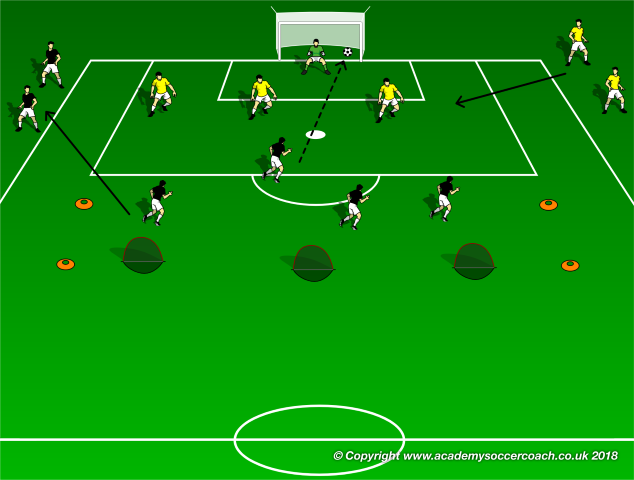
If the defending team scores an additional attacking player is added and a defender leaves the field. After the set time whoever has the greater plus minus wins.
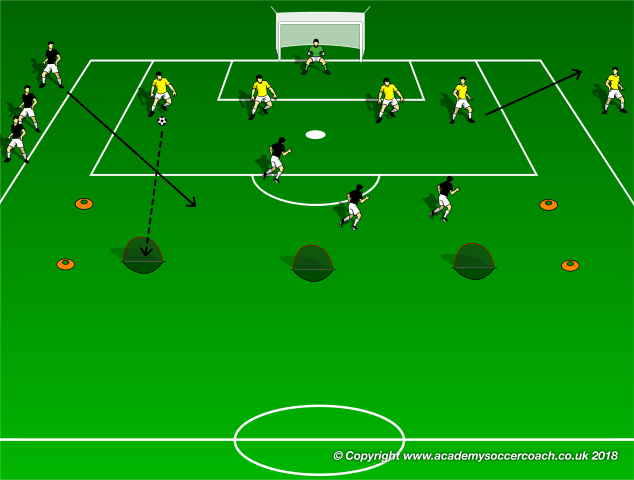
Variations: Number of starting players can vary, as well as what the subs on the sideline are doing.
By Matthew Carroll

Sideways Transition
By Matthew Carroll –
Description: The Sideways Transition activity is designed to recreate the transition moment from a 50/50 ball.
Setup: A 25×25 grid is arranged with two full sized goals at either end arranged 15yds away from either end of the grid. Goalkeepers are placed in either goal. Teams are arranged into two teams, and then divided again so that there is four teams, two teams a piece wearing the same color bib. One of each of the colored teams is in the middle, while the reserves for each team are placed on the sides of the grids with no goals.
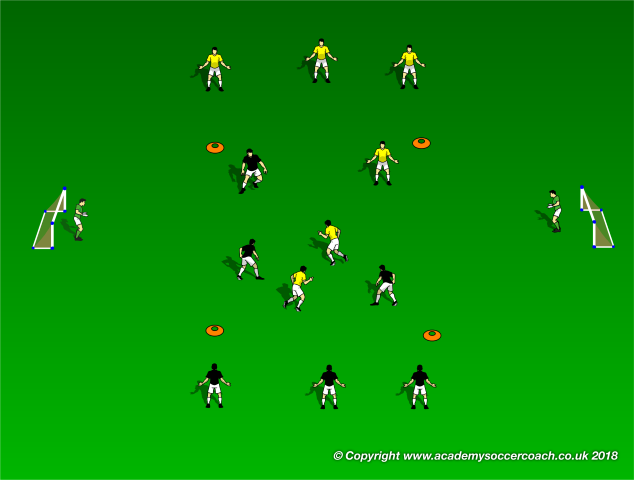
Execution:
Play starts with a goalie throwing a 50/50 ball into the grid. Players look to connect three passes together amongst their teammates to create scoring chances on either goal. The third pass of the combination play can be a through ball that goes out of the grid towards a goal. If the team out of possession wins the through ball they can play the ball back into the grid to a teammate or to the goalie for a restart. Any ball that goes out before a third pass is played a goalie restarts play with a throw into the grid.
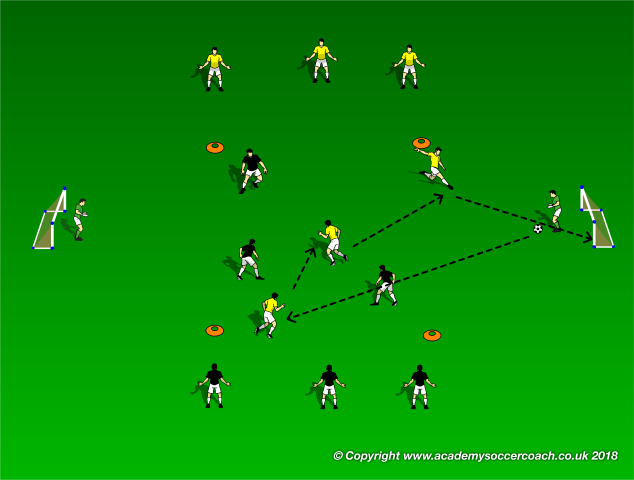
If a team scores they then stay on the field, and the team that was scored on is replaced by their reserves. If a team shoots and the ball goes over the bar they are replaced by their reserves. If no one scores for 90 seconds both teams are replaced by their reserves
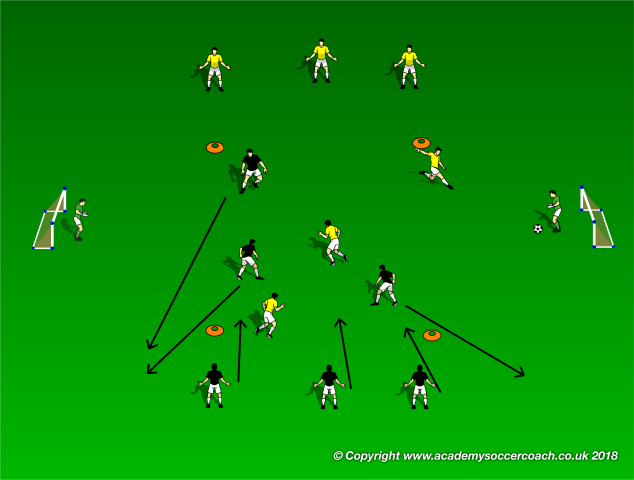
Variations: Numbers of players, time per rep, and size of the grid can all be altered
By Matthew Carroll
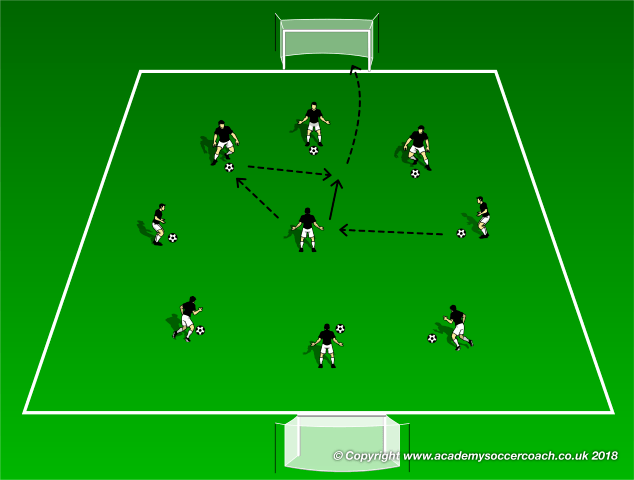
Two Man Rondo
By Matthew Carroll –
Description: The two man rondo is an activity designed to improve player’s vision and mental conditioning by creating a series of distractions that increase as the activity proceeds, but still requires all the base technical elements to be executed to procision throughout
Setup: Set up a normal rondo with every alternating player wearing a different colored bib. Give a ball to a player with one color big, and one to the other.
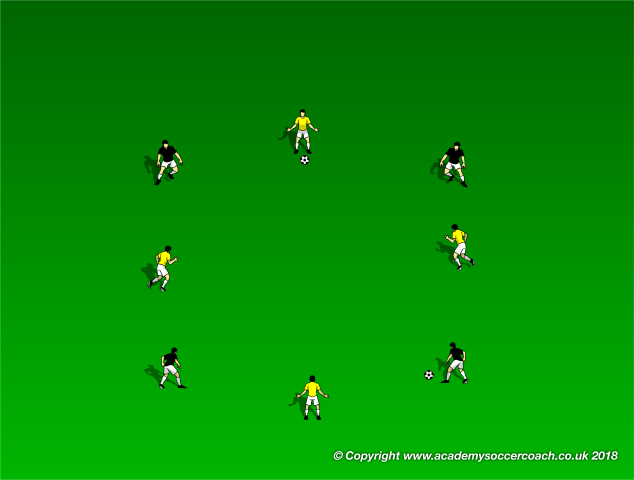
Execution: Begin the game as a normal rondo with the stipulation that the players cannot pass to the player on their team directly to the left and right of them, and must play either one or two touch. If the balls that are in play touch both teams need to do some sort of conditioning (push ups, sit ups, jumping jacks, etc.)
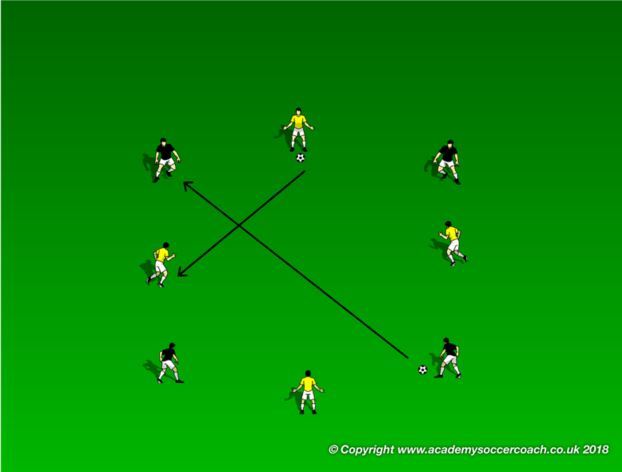
As the drill progresses and the players become more comfortable with the rhythm and technique add a player from each team in the middle. If the player in the middle wins the ball they should pass to their own team so that the team that won the ball now is possessing with two balls. Players on the outside of the rondo can only win possession of a ball if the ball is passed directly to them by the opposition.
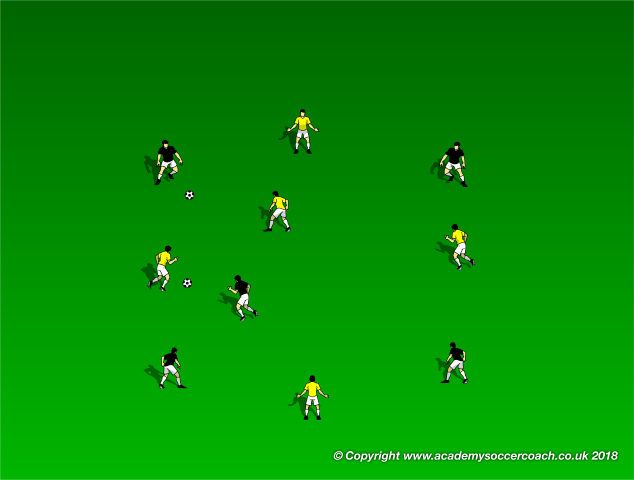
Variations:
To increase the hectic nature of the drill additional balls can be added, for example each team plays with two balls.
To create additional distractions a small tennis ball can be added that players must throw to each other. If the player with the ball receives a pass while holding the ball, or the ball is dropped or held for longer than three seconds the group as a whole must do some sort of conditioning
By Matthew Carroll
